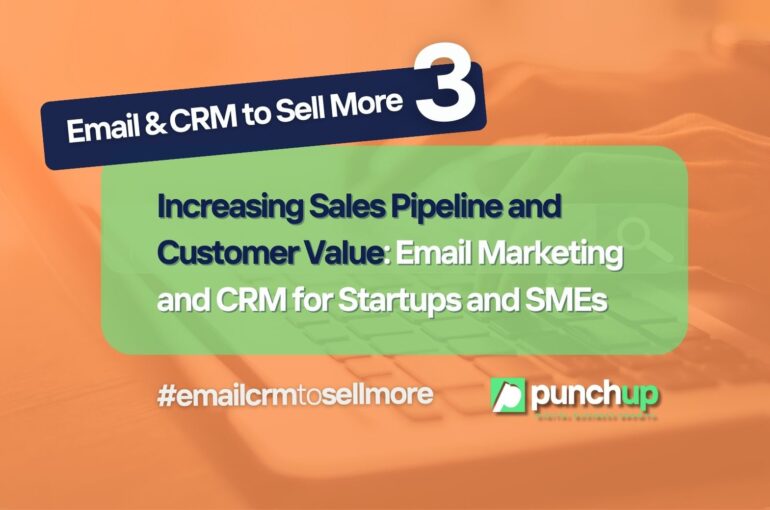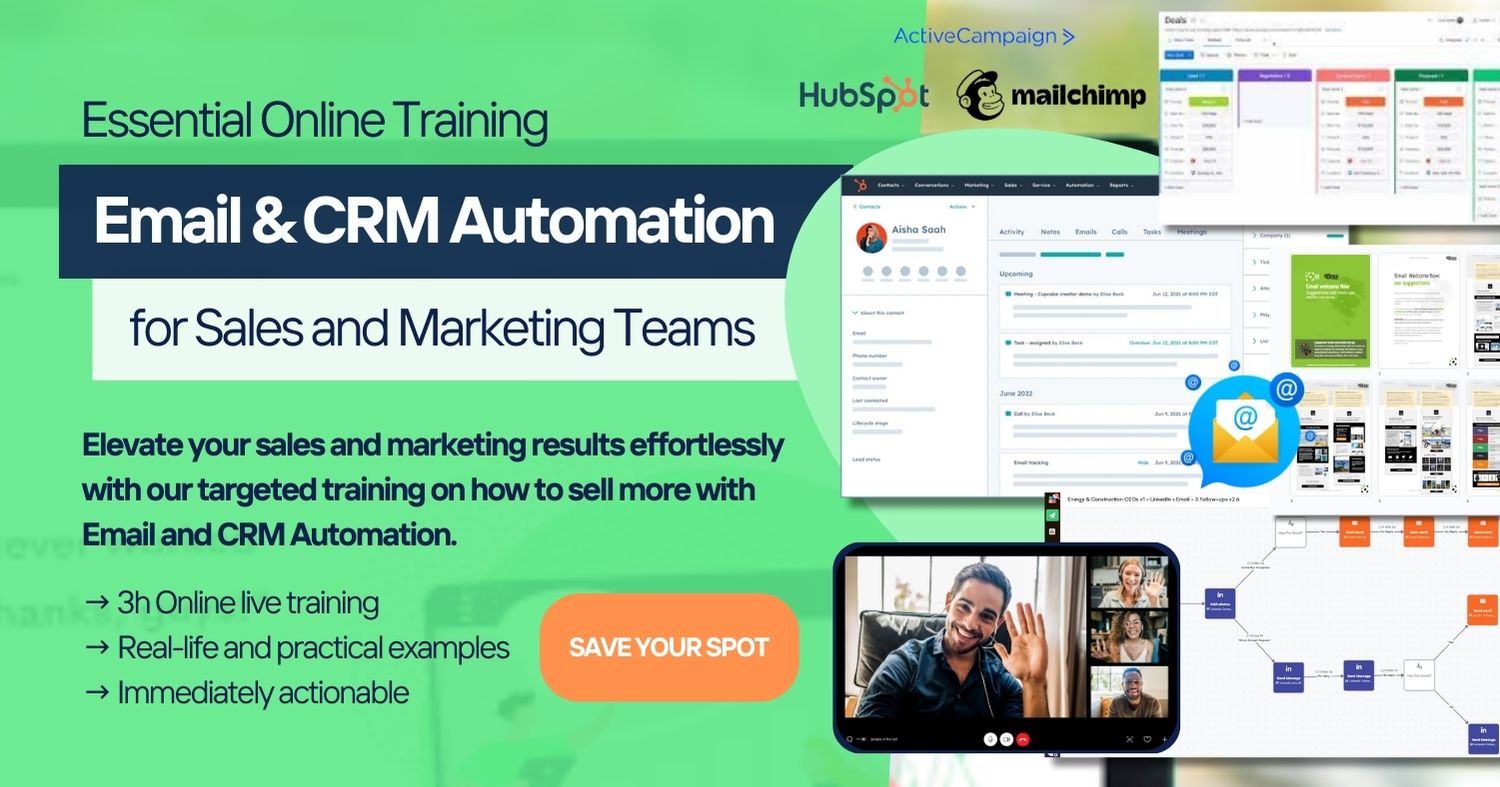[Email & CRM to Sell More #3] Increasing Sales Pipeline and Customer Value: Integrating Email Marketing and CRM for Startups and SMEs
[Email & CRM to Sell More #3] Increasing Sales Pipeline and Customer Value: Integrating Email Marketing and CRM for Startups and SMEs

Combining email marketing with CRM is like peanut butter and jelly – separately good, together great.
Focusing on the integration of email marketing and CRM automation as a strategic approach for startups and SMEs to enhance their sales pipeline and increase customer value.
Don’t forget: if you want to expand your knowledge and really get things in motion, check our new Email & CRM Automation Training for Sales and Marketing Teams. We can guarantee you it will be immediately actionable, as soon as you finish the session.
Enhancing Business Strategies with Integrated Solutions
This section will delve into why integration of email marketing and CRM is more than just a technical setup. It’s a strategic move that can transform the way businesses interact with their customers, aligning marketing and sales efforts to drive more significant results.
Integrating these tools isn’t just a technical exercise; it’s like creating a symphony where each note is perfectly in tune.

The starting point
-
- Syncing Data: Start by ensuring your CRM and email marketing tools are not just connected but synced. This means when a customer’s status updates in the CRM, it triggers a corresponding email. For example, a prospect moving to ‘interested’ in the CRM could automatically receive an email with more detailed product information.
- Segmentation for Precision Targeting: Use CRM data to segment your email lists. Segmentation might be based on customer behavior, purchase history, or engagement level. For instance, customers who repeatedly purchase a particular product category can receive targeted emails about similar products or exclusive offers in that category.
- Syncing Data: Start by ensuring your CRM and email marketing tools are not just connected but synced. This means when a customer’s status updates in the CRM, it triggers a corresponding email. For example, a prospect moving to ‘interested’ in the CRM could automatically receive an email with more detailed product information.
"Every interaction becomes a focused effort to enhance customer value and expand the sales pipeline, turning routine communication into impactful connections."
Personalization: Beyond ‘Dear [First Name]’
- Dynamic Content: Use CRM data to personalize not just the greeting but the entire email content. Imagine sending an email about a winter coat sale to a customer who recently browsed winter wear on your website.
- Behavior-Based Triggers: Set up email triggers based on customer actions. If a customer abandons their cart, an automated email can remind them of the items waiting for them, perhaps with a small discount to nudge them towards purchase.
Nurturing Leads Through the Sales Funnel
- Welcome Series for New Subscribers: When a new lead enters your CRM, trigger a welcome email series that gradually introduces your brand and offerings. This series could include a welcome discount, a brand story email, and a product showcase.
- Educational Content for Engagement: Use both platforms to send informative content that helps leads move down the funnel. For example, if a prospect downloads a buying guide, the CRM notes this interest, triggering a series of emails on related topics or products.
Measuring Success and Refining Strategies
- Analytics for Insight: Use CRM and email marketing analytics to measure campaign performance. Look at open rates, click-through rates, and conversion rates. For instance, if a particular email subject line results in higher open rates, consider using similar language in future campaigns.
- Continuous Improvement: Regularly review the data to identify trends and patterns. Use this information to refine your approach, such as adjusting email frequency or content based on what resonates most with your audience.
Real-World Examples of Successful Integration
- E-commerce Store: An online retailer uses CRM data to segment customers based on past purchases. They send personalized email recommendations for new arrivals in categories each customer has shown interest in, resulting in increased repeat purchases.
- B2B Service Provider: A B2B company tracks client interactions in their CRM, using this data to tailor their email communication. After a client meeting, the CRM triggers an automated email summarizing the discussion points and next steps, enhancing client engagement and retention.
Leveraging Integration for Long-Term Relationships
This integrated approach isn’t just about short-term sales; it’s about building long-term customer relationships. By consistently providing value through personalized, data-driven communications, businesses can turn one-time buyers into loyal advocates.
Conclusion
Integrating email marketing with CRM isn’t just a strategy; it’s a transformation. It’s about creating a cohesive, data-informed approach to customer interactions that not only boosts your sales pipeline but also elevates the entire customer experience, turning transactions into lasting relationships.
If you want to learn how to implement all of this and much more, have a look our unique 2024 training on Email & CRM Automation, to increase the value of your leads and customers.




